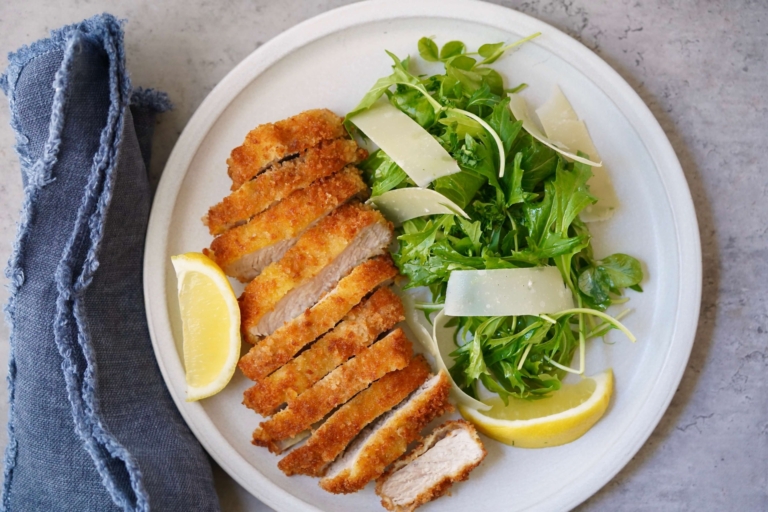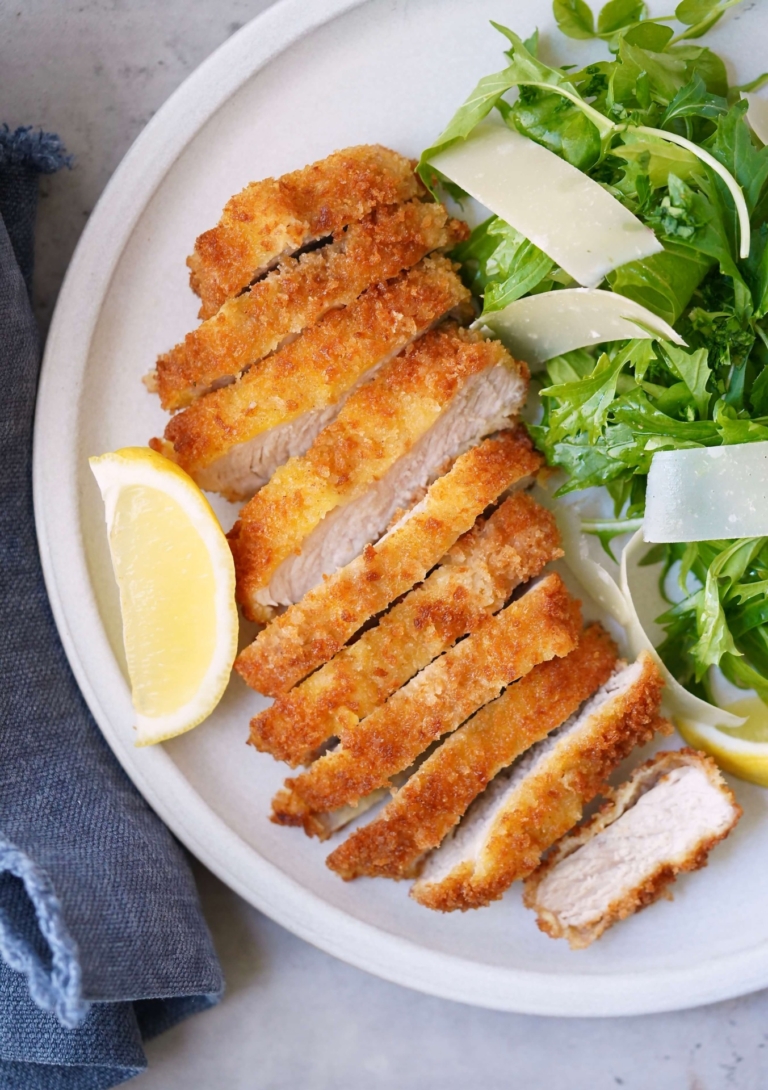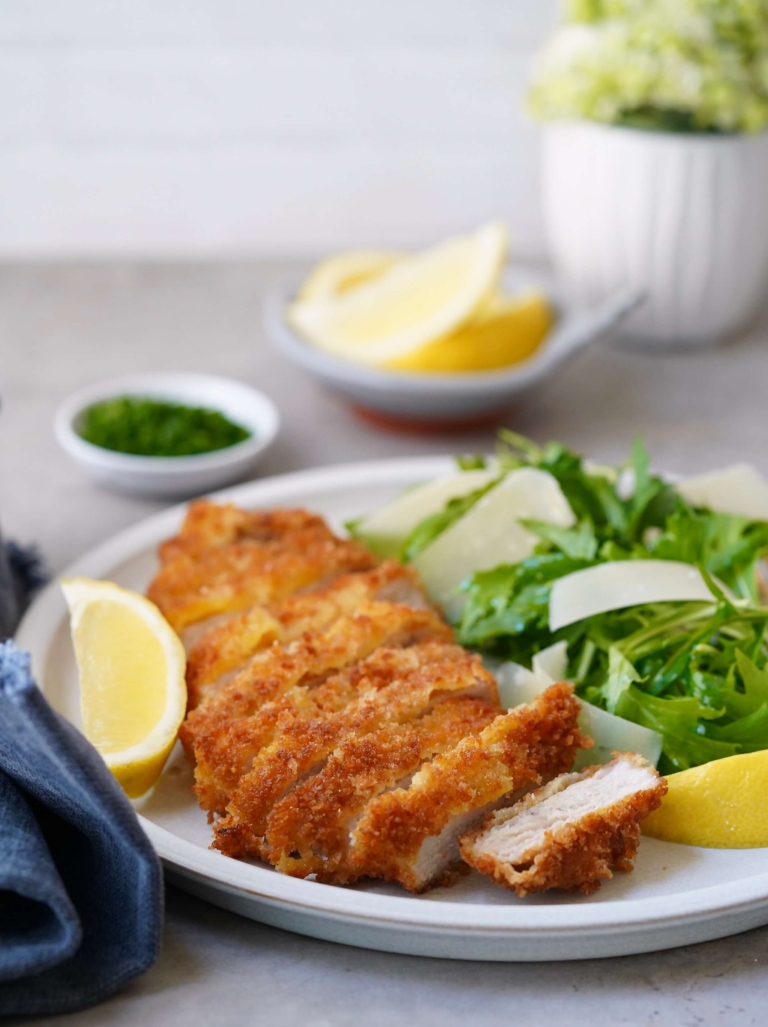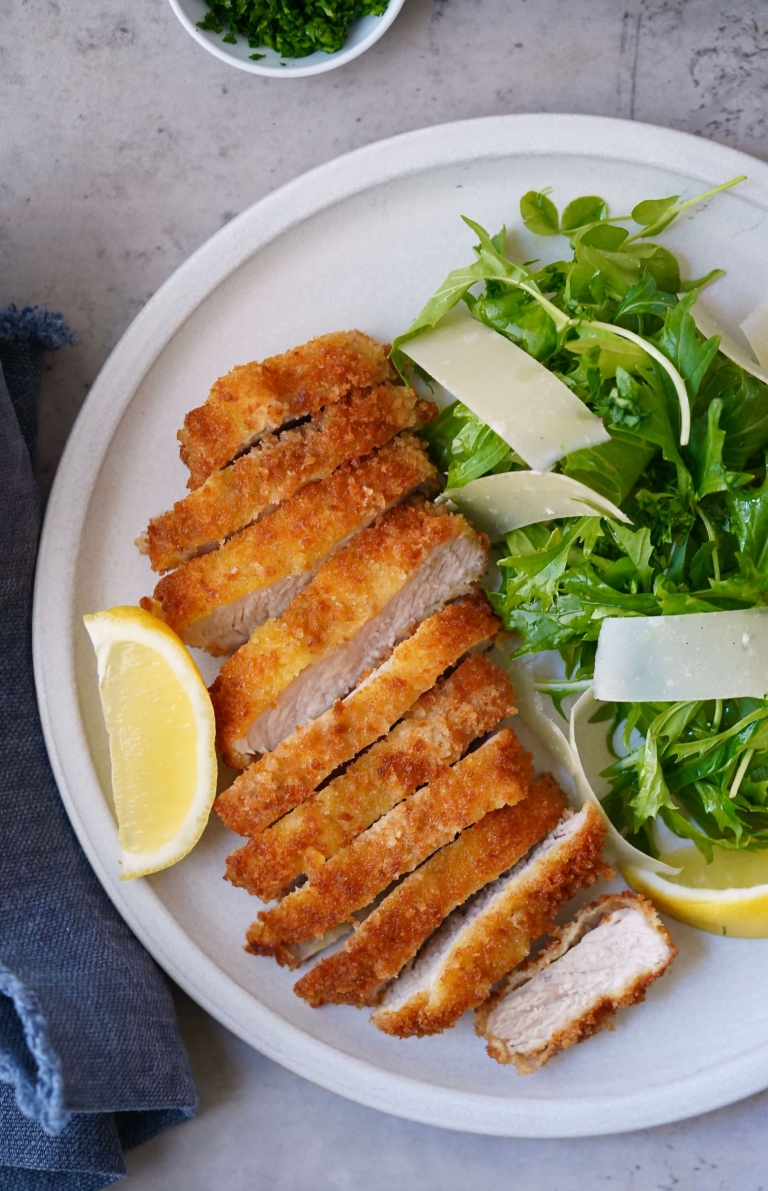Pork Milanese

Pork is “the other white meat”, or so it’s been called. In 1987 the U.S. National Pork Board began an aggressive advertising campaign to help position pork as a white meat alternative since it was commonly getting overlooked by consumers. The campaign was paid for using a checkoff (tax) collected from the initial sale of all pigs and pork products. The Board chose this campaign in part due to a public perception that chicken and turkey were “healthier” choices compared to red meat.

The biggest challenge with pork was that many common pork products were not all that healthy: bacon (high in sodium, loaded with nitrates), ribs (fattiest cut), ham (typically high in sodium, full of nitrates), and pork rinds (extremely fatty). But other types of pork cuts, such as cutlets and loins, were great low-fat options. The Pork Board’s campaign turned out to be extremely successful and 87% of consumers began to identify pork with that slogan and therefore began buying more of it. The catchy phrase boosted pork sales and the Board kept it as its go-to slogan until it was finally retired in 2011. Ironically, despite pork’s uber-popular tagline, the United States Department of Agriculture doesn’t classify pork as white meat, but rather it falls in the red meat category–a testament to how deceiving advertising can be.
Health Benefits of Pork
Despite the success of the pro-pork campaign, pork still lacks the true attention it deserves. What people should focus on is the big boost of complete protein pork has to offer. Nutritionally speaking, pork, (particularly lean pork cuts), are loaded with iron, potassium, and many other essential nutrients while being about as lean as chicken. Thanks to modern advances, today’s hogs and domestic swine have substantially less fat than they used to have due to improved genetics, breeding, and feeding techniques. So the real takeaway is unless you follow religious restrictions and abstain from eating pork altogether, incorporate pork into your recipe repertoire as both an inexpensive and somewhat “healthy” protein option.
When cooking pork of any kind what’s essential is practicing good food safety, which primarily means to cook it thoroughly. Using a digital meat thermometer will help. But note, that a slight pink(ish) color is, despite what many people think, considered safe as long as the internal the suggested internal temperature of 145 degrees has been reached.

Pork Milanese, or “Cotoletta Alla Milanese“ as it’s often called, is typically made with veal, coated in flour and egg, and dipped in seasoned breadcrumbs, but can be made with other types of meat such as chicken, turkey, or pork. The origin of the dish is not fully known but my understanding is both Austrians and the Italians claim to have invented it. The technique used here is not unlike the traditional French technique I use in Eli’s crispy chicken recipe, the pork is dredged in flour, beaten egg, and bread crumb coating, but the flavor is very different with pork and the addition of parmesan cheese.
Like my chicken recipe, this is a great, flavorful quick meal option for all types of eaters. Served with a simple arugula salad, it is a perfect meal all year round but one I love in warmer months.

Pork Milanese
Ingredients:
For the Pork:
- 4 boneless pork cutlets
- Kosher salt and freshly ground black pepper
- 1 cup all-purpose flour
- 2 large eggs, lightly beaten
- 1 cup plain panko bread crumbs
- 1/3 cup freshly grated Parmesan cheese
- 4 tablespoons neutral oil
- 1 tablespoon unsalted butter
For the Arugula Salad:
- 6-8 cups baby arugula
- Kosher salt and freshly ground black pepper, to taste
- 1 lemon, divided
- 2 tablespoons Extra Virgin olive oil
- 1/4 cup freshly shaved Parmesan cheese
Directions:
- Use a meat tenderizer to pound the pork cutlets until they are about 1/-inch thick, make sure they are as even in thickness as possible for similar cooking times. Season the pork with salt and pepper.
- Place the flour in a shallow mixing bowl. Place the eggs in a second bowl and lastly in a third bowl, combine the panko bread crumbs and grated Parmesan cheese. Place a large dinner plate near your workstation.
- Using your hands, gently dip each piece of pork cutlet in flour coating it evenly. Next, dip the cutlet into the egg mixture and then into the breadcrumbs, pressing gently so the coating adheres. Place on the plate and repeat the above process.
- Place a second dinner plate lined with some paper towel near your workstation. In a large skillet, add the oil and the butter and place over medium-high heat. Once hot, add the cutlets and cook on each side for about 3 to 4 minutes, until golden brown and crispy and the internal temperature is 145 degrees F. Remove the cutlets from the pan and place them on the prepared plate, allowing the cutlets to rest for a few minutes before slicing.
- To Serve: Place the arugula in a bowl and toss it well with salt and pepper. Squeeze on the juice of 1/2 lemon drizzle in the olive oil and toss well. Add in the shaved Parmesan and gently toss.
- Slice the cooked cutlets and serve with the arugula salad. Slice the remaining half of the lemon and use for garnish.



Leave a Reply